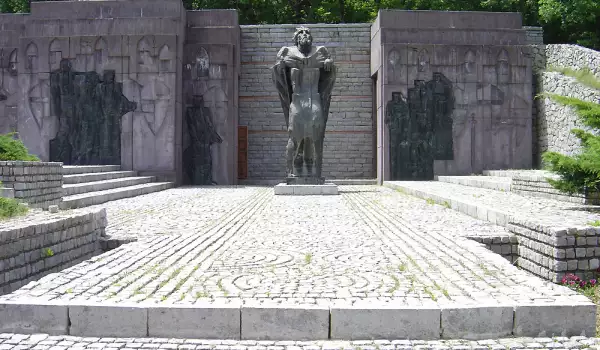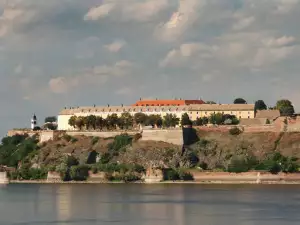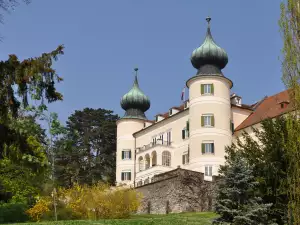Samuil’s Fortress

Samuil’s Fortress is one of the most important medieval castles, preserved to this day the Bulgarian lands. Samuil's Fortress has great historical significance, mostly because of the key events and turning points of history of Bulgaria, which originated in the lands around it. Samuil's Fortress Today is the emblem of the historic grandeur of the former Bulgarian state, but simultaneously it is a great reminder of the tragedy that happened here in 1014.
Samuil's Fortress stands on a hill on the right bank of the river Strumeshnitsa. It e situated between the Belasitsa mountain and Klyuchka ravine. Samuil's Fortress is located only five kilometres from the village of Klyuch. This historic shrine dominates the surrounding land of about 20 km. southwest of Petrich and only 4 km. from the Bulgarian border with Macedonia. Samuil's Fortress is included within the National Park-Museum "Samuil Fortress”.
It is believed that Samuil's Fortress was probably erected in the period of the 1009-1013 years, during the reign of Tsar Samuil, having been part of the massive fortification system of the Bulgarian ruler, then taken to protect their territories from the Byzantine army. The castle was built on the foundations of an early Bulgarian Thracian and Slavic settlement.

The castle of Tsar Samuil, which rises on the hill near the village of Klyuch is a fort backed by three pits and two shafts, which are concentrically arranged around Samuil's Fortress. The first shaft has a complex internal structure, the kernel is made of stones and earth, underpinned by a wooden beam. Once upon a time, the shaft ended in a broad wall built of stones, soldered to the stone material using ordinary mud.
For the solidity of the defensive structure Samuil's Fortress stand rectangular stone foundations and a wooden observation defence tower on top of the hill. The tower was connected by a stone wall construction. The other two shafts have a unified structure on its embankment.
Of course, where Samuil's Fortress was to be erected was not chosen accidentally. From the high hill, the switch has visibility and control capability and rapid response to any threat from any side of the whole gorge. There was a military command post in all strategic sectors of the defence system.
Near Samuil's Fortress, in 1014, plaid out one of the biggest tragedies in the history of the Bulgarian state.

The battle between Bulgarians and Byzantines ended with victory of the Byzantines. In this Battle, Emperor Basil II defeated the Bulgarian army, led by Tsar Samuil. In addition, there is an absolute victory, the Emperor takes captive all surviving Bulgarian soldiers. According to Christian doctrine, the then captured Christians should be released after the war. Basil II, trampled military rule and blinded the captive Bulgarian army, leaving one out of every hundred people with sight as a leader. 14 000 Bulgarian soldiers were mutilated. Tsar Samuil himself escaped.
In 1982 this became a national park-museum "Samuil Fortress". Samuil Fortress is eight kilometres and its fortifications are part of the 100 national tourist sites of the Bulgarian Tourist Union. Today, those wishing to visit Samuil's Fortress can do every day from 8.15 to 16.00, closed days are Sunday and Monday.
The site is part of a movement founded in 1966, called the 100 National Tourist Sites Bulgaria.















